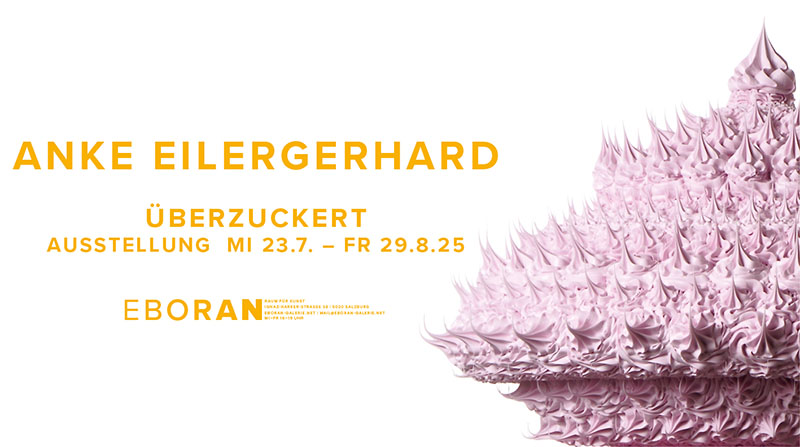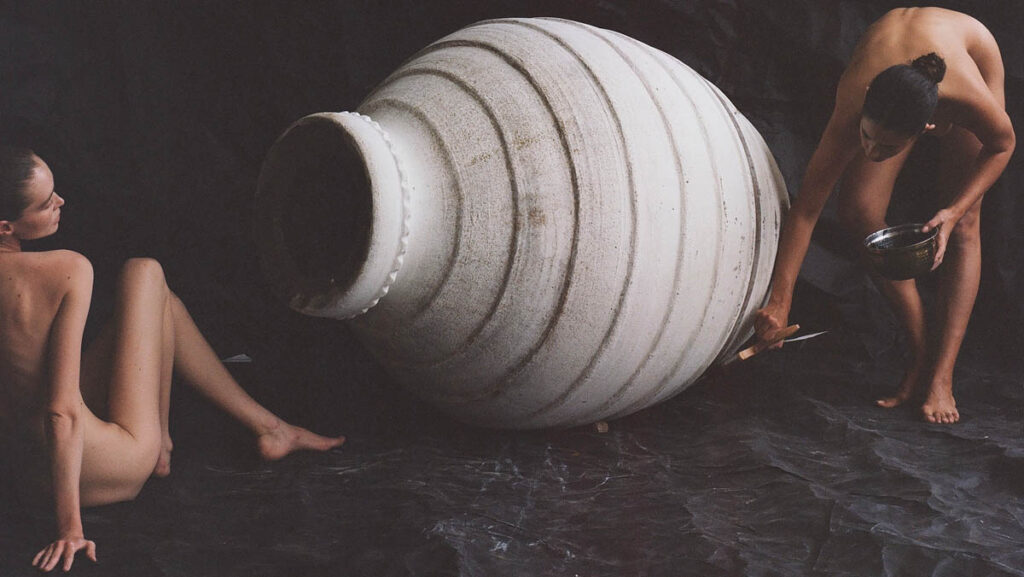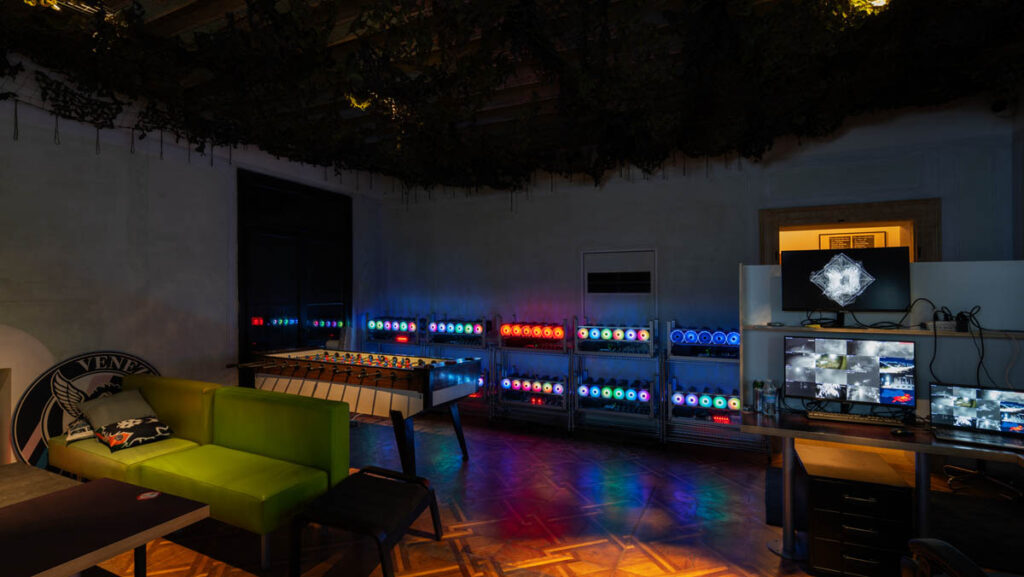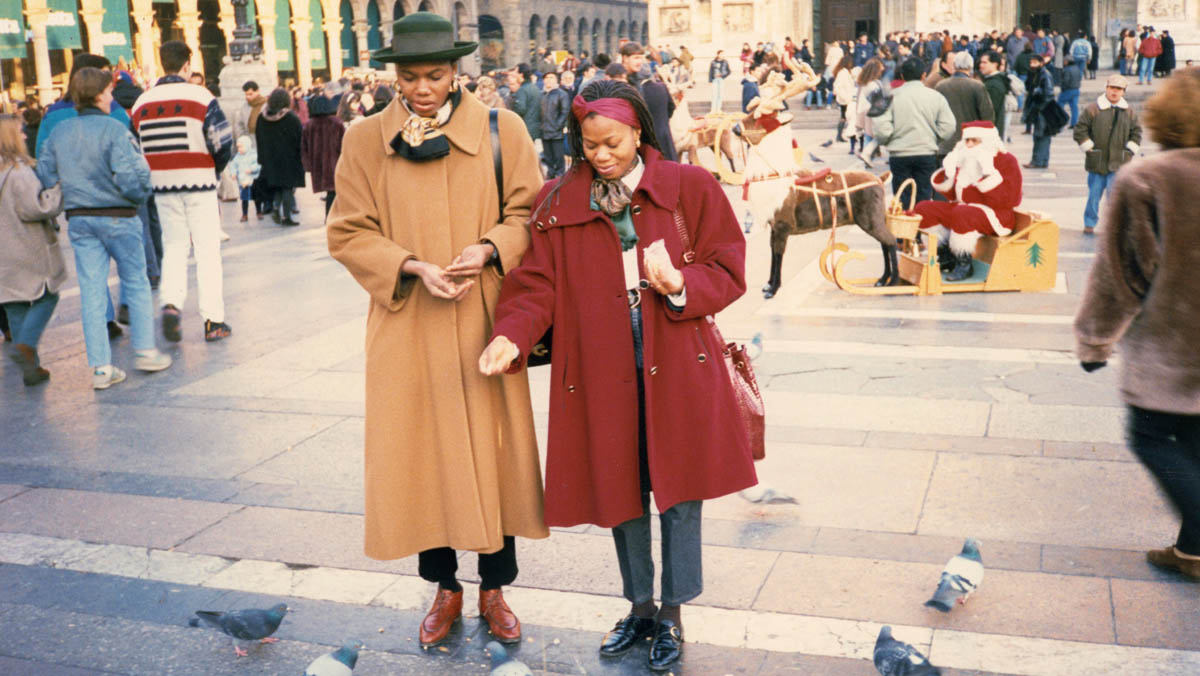
© Silvia Rosi
Silvia Rosi, a young emerging artist who grew up not far from Reggio (interestingly enough in the same town of Luigi Ghirri, the icon photographer from Scandiano who depicted pianura Padana in its post-everything multi-faceted nuances divinely) now lives between London and Togo, exploring within her practice Afro-Italian heritage through a captivating blend of photography and moving imagery. Drawing from vernacular images collected across Emilia-Romagna, Rosi challenges stereotypes and affirms collective identities.
Inspired by luminaries like Cindy Sherman, her self-portraits blur the lines between personal narrative and public discourse, inviting viewers to reconsider perceptions of cultural heritage and identity in contemporary Italy.
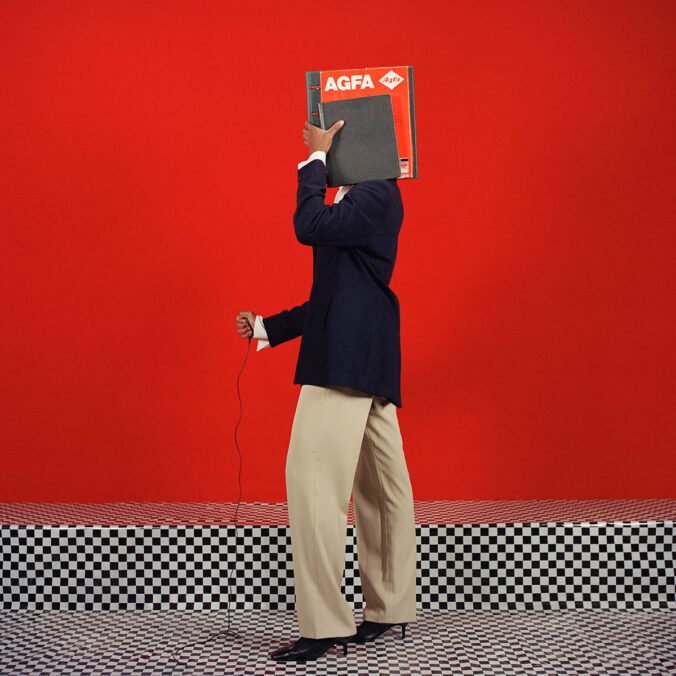
© Silvia Rosi. Realizzata con il supporto di Collezione Maramotti / Realised with the support of Collezione Maramotti
Where if not in the oasis that is Reggio Emilia could lie the greatest example of Emilian savoir faire, Collezione Maramotti. There the intellectual traditions of the capoluogo – famous amongst other contributions for its educational philosophy method – intertwine with a well curated contemporary art program and its relative prices, all adorned in the rich setting that is the permanent collection of the museum.
In the visionary landscape of Achille Maramotti’s mind, the seeds of a revolutionary concept took hold during the Seventies. He envisioned a sanctuary – strictly linked and in conversation to the Max Mara factory and production – where aspirations transcended mere curation; they indeed blossomed into a symphony of aesthetic devotion and intellectual reverence. An institution not bound by exclusivity, but rather, a haven where curious minds of all kinds could converge in celebration of artistic ingenuity. Through the corridors and shared spaces of the Max Mara manufacturing edifice on via Fratelli Cervi – a street named after the seven partisan brothers who lost their lives shot by the fascists in Reggio in 1943 – fragments of this vision found solace in fleeting exhibitions.
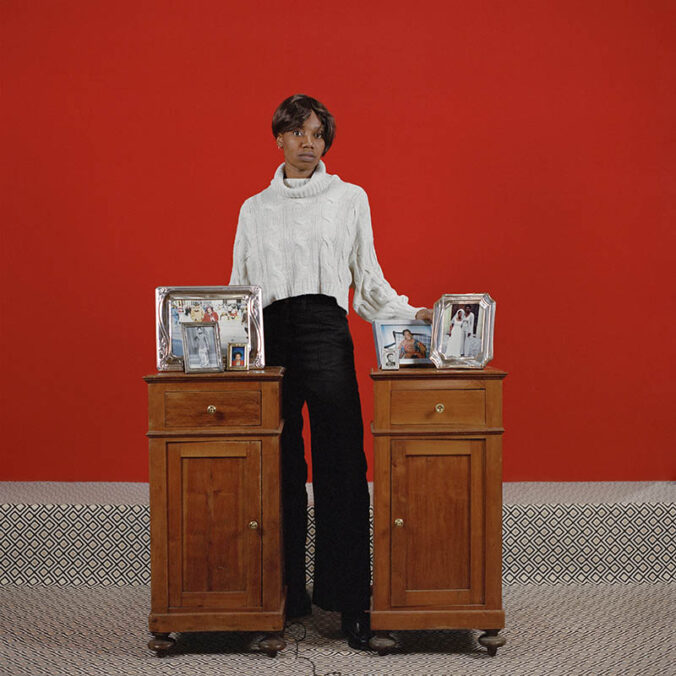
© Silvia Rosi. Realizzata con il supporto di Collezione Maramotti / Realised with the support of Collezione Maramotti
© Silvia Rosi. Realizzata con il supporto di Collezione Maramotti / Realised with the support of Collezione Maramotti
As the new millennium approached, the transformation beckoned. With resolute continuity, the once-hallowed halls of fashion creation became the hallowed grounds of the Collezione Maramotti, a testament to the enduring legacy of the artistic exploration and industrial alchemy of the Reggiano family.
‘I used to feel integrated, now I am disintegrated’. A sentence pronounced by Silvia’s mother started the artist’s journey of discovery into the diaspora experience with her relative photographic practice developed exclusively for the exhibition. When she pronounces those words, a faint and slightly embarrassed laugh stays in the air; in my own thoughts, I immediately distance myself from the crowd and reach the bright colored pictures interspersed with the black and white ones and dive into them: the sounds coming from the other guests are suddenly paused and I can begin to experience the work on my own, always accompanied by the words of Silvia that echo throughout the collection’s rooms.
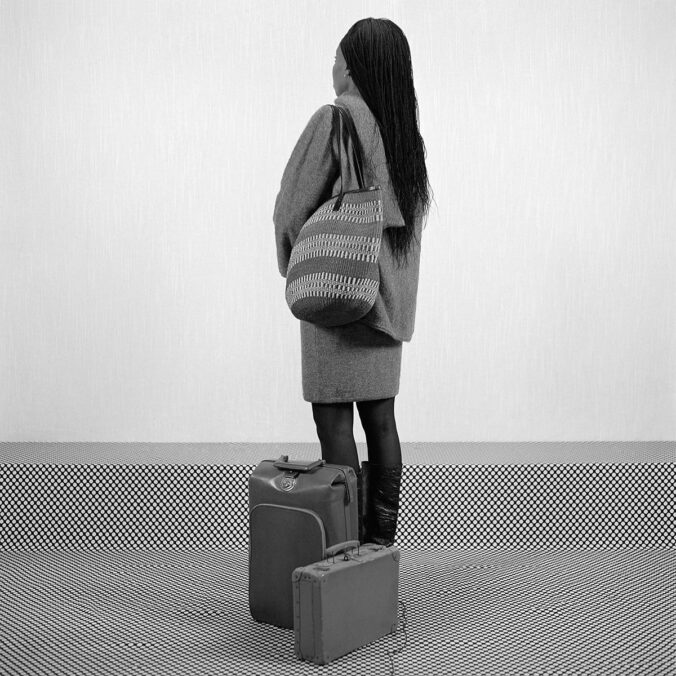
© Silvia Rosi. Realizzata con il supporto di Collezione Maramotti / Realised with the support of Collezione Maramotti
© Silvia Rosi. Realizzata con il supporto di Collezione Maramotti / Realised with the support of Collezione Maramotti
Her pictures and moving videos, a mix of neutral Emilia-native paysages, studio reproductions, inspired by family pictures personified by the artist herself, and archive work – as viewed in the last room of the exhibition which collected in a transparent box a series of photographs that saw the involvement of researchers Mistura Allison, Theophilus Imani and Ifeoma Nneka Emelurumonye -feel like stepping into someone’s personal and very own museum of memories.
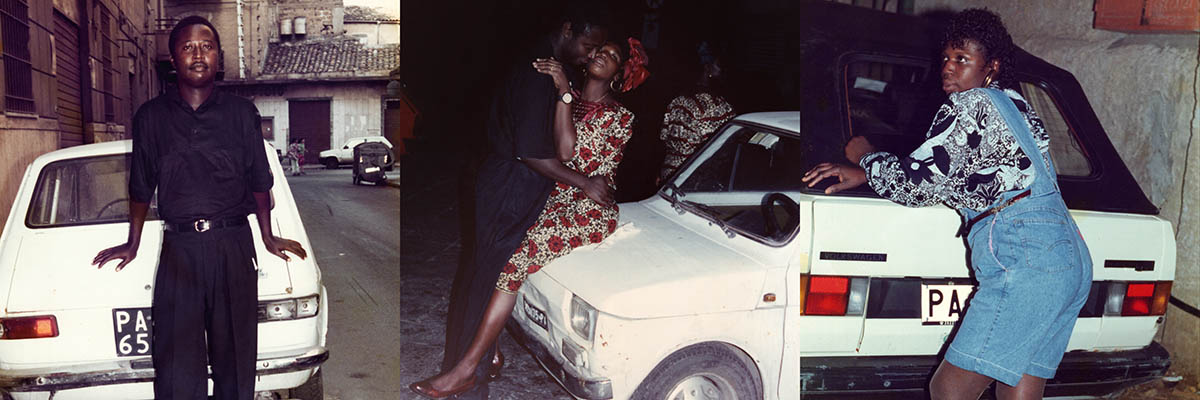
Those archive pictures tell of everyday life but also the exceptional nature of events: a journey, a party, a celebration of the many families originating from various African countries, including the Owusu, the Ameganvi family and the Keita family.
It is almost impossible not to fall into pieces in front of the simplicity of images like those; the smiles are, to me, the most gorgeous smiles I’ve ever experienced, the poses as natural as they could never be to this day.
What makes a country a country? The answer may be impossible to be found, thankfully the definition of designated borders is becoming more and more vague today, and yet there is often in the background a very present, although sometimes quiet, story that talks of migration and people finding the ‘else’ they needed somewhere unfamiliar, and making it become the familiar we now call Home.
We often come across pictures from family albums, and sometimes we wonder how those moments are so far away and yet so close to our present. Instants of joy, transformation, and life that live with or without us.
I also often ask myself if we make memories or memories make us. Disintegrata has left me without answers but with a thousand open questions that perhaps don’t require one.
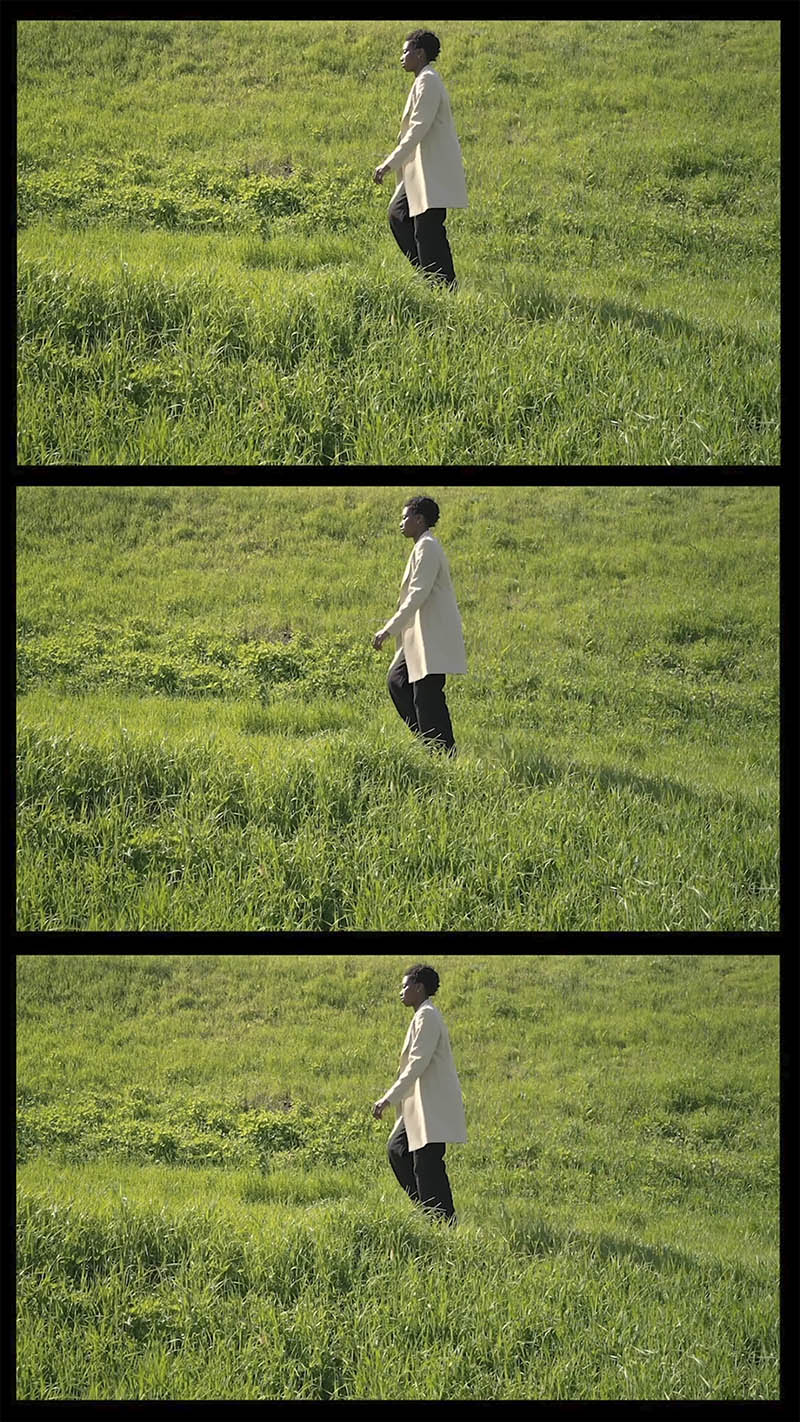
I felt my heart filling with a kind of unconditional for the people who make us, how we are made from them, even and especially when observing from a certain distance. It could maybe consist in sending each other audio cassettes from very far places describing the everyday and its many facets, as seen in the last video room installation Disintegrata nel Paesaggio (2024), which focuses on letters sent from Togo to Italy, read by the same people who received them in the 80s and 90s. Between a teardrop and a laugh, leaving the seat facing the screen has been a challenge.
Silvia’s practice is a work in progress of looking back, with a small but open enough distance on what we bring with us forward. A precious testimony of what is left and how to create Beauty on its already-built foundations.
Amanda Luna Ballerini is a writer, stylist, and connoisseur (+ something else sometimes) based in Milan. She mostly writes of images and pictures words to create new possible scenarios every time – www.instagram.com/mamandada/, www.amandalunaballerini.com.



